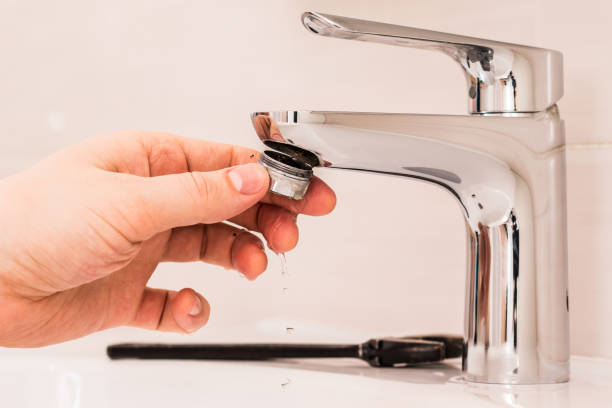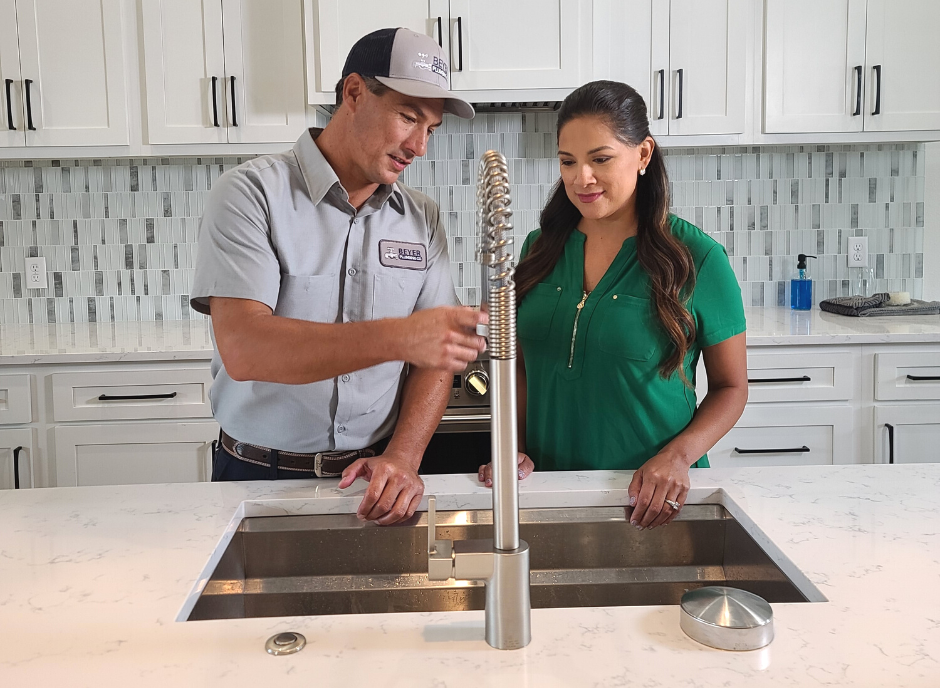When It's Necessary to Resolve a Broken Faucet
When It's Necessary to Resolve a Broken Faucet
Blog Article
Right here in the next paragraphs you might get more sound answers in relation to Should I Repair or Replace a Leaky Faucet?.

Leaking taps might feel like a minor hassle, however their influence surpasses simply the annoyance of the noise. From drainage to sustaining unnecessary economic costs and wellness dangers, overlooking a dripping faucet can lead to different effects. In this post, we'll explore why it's important to resolve this typical home concern without delay and properly.
Wastefulness of Water
Environmental Impact
Dripping taps add substantially to water wastefulness. According to the Epa (EPA), a single faucet leaking at one drip per second can lose more than 3,000 gallons of water each year. This not just pressures water sources but likewise impacts ecological communities and wild animals dependent on them.
Step-by-Step Overview to Repairing a Dripping Tap
Tools Called for
Prior to trying to deal with a trickling faucet, gather the required tools, consisting of an adjustable wrench, screwdrivers, replacement parts (such as washers or cartridges), and plumber's tape.
Usual Faucet Issues and Their Solutions
Recognize the sort of faucet and the details problem triggering the drip. Common troubles consist of damaged washers, corroded shutoff seats, or malfunctioning O-rings. Refer to supplier instructions or on the internet tutorials for step-by-step support on repair services.
Financial Expenses
Boosted Water Costs
Past the environmental influence, trickling faucets can pump up water expenses considerably. The gathered wastefulness gradually translates into greater utility costs, which can have been prevented with prompt fixings.
Potential Building Damage
Furthermore, long term trickling can result in harm to fixtures and surface areas bordering the faucet. Water buildup can cause discoloration, rust, and also structural problems if left unattended, causing added fixing costs.
Wellness Issues
Mold and Mold Growth
The constant presence of dampness from a dripping tap develops a perfect setting for mold and mildew and mold growth. These fungis not only endanger indoor air high quality however likewise posture wellness threats, especially for people with respiratory system problems or allergic reactions.
Waterborne Diseases
Stagnant water in leaking taps can end up being a breeding ground for bacteria and various other microorganisms, increasing the threat of waterborne illness. Contaminants such as Legionella microorganisms flourish in stagnant water, possibly resulting in significant ailments when ingested or breathed in.
Do it yourself vs. Professional Repair
Benefits and drawbacks of Do It Yourself Repair
While some might try to repair a leaking tap themselves, DIY repairs come with their own set of challenges. Without proper expertise and tools, DIY attempts can intensify the problem or lead to insufficient repairs, extending the trouble.
Advantages of Hiring an Expert Plumber
Hiring a specialist plumber makes sure that the underlying source of the dripping tap is addressed successfully. Plumbings possess the expertise and tools to detect and fix tap problems effectively, saving time and decreasing the threat of additional damages.
Environmental Duty
Individual Payment to Conservation
Taking obligation for dealing with trickling taps lines up with wider initiatives towards water preservation and environmental sustainability. Every individual's actions collectively make a considerable influence on maintaining valuable resources.
Sustainable Living Practices
By prioritizing prompt fixings and taking on water-saving practices, individuals contribute to sustainable living practices that benefit both present and future generations.
Preventive Measures
Regular Maintenance Tips
To avoid dripping faucets, do routine upkeep such as cleansing aerators, examining for leaks, and replacing damaged components promptly. In addition, consider installing water-saving devices or updating to much more reliable fixtures.
Value of Prompt Repairs
Dealing with dripping faucets as soon as they're discovered prevents more water wastage and prospective damage, ultimately saving both water and cash over time.
Effect On Building Worth
Perception of Well-Maintained Residential Or Commercial Property
Preserving a building in good condition, including dealing with upkeep concerns like trickling taps, boosts its regarded value and desirability amongst prospective buyers or lessees.
Impact on Resale Worth
Qualities with well-maintained plumbing components, including taps, command greater resale worths in the realty market. Attending to leaking taps can add to a favorable impact throughout building examinations and settlements.
Conclusion
Attending to a trickling tap goes beyond plain comfort; it's a vital action towards conserving water, lowering financial expenses, and guarding health and wellness and building. Whether via do it yourself repairs or professional assistance, doing something about it to repair leaking faucets is a small yet impactful method to advertise liable stewardship of resources and contribute to a healthier, more lasting future.
How to Fix a Dripping or Leaky Faucet
A leaking faucet is one of the most common problems that homeowners encounter, but it being commonplace doesn’t make it any less annoying. The constant drip drip drip of a leaking bathtub faucet, showerhead, or sink tap can disturb your home’s serenity. Left neglected, a dripping faucet can also result in higher water bills and discoloration or mold growth in your sink or plumbing fixtures.
Fortunately, you don’t have to be a trained plumber to know how to stop a dripping faucet. With some basic tools, replacement parts, and a little patience, leaky faucet repair is a breeze. In this article, we’ll explain what causes dripping faucets and how you can fix them.
What Causes a Leaking Faucet?
Kitchen and bathroom faucets come in all manner of designs, but most involve some combination of valves, O-rings, seals, and washers. The O-ring is usually the weakest link, but any one of these pieces can wear down over time. Heat, moisture, temperature fluctuations, minerals, mold, and movement can contribute to warping and corrosion, breaking the watertight seal. This just comes with the territory of being a homeowner. Everything is always subject to wear and tear, and some component parts of your appliances and fixtures need to be replaced on occasion. At least replacement O-rings are cheap!
More rarely, dripping faucets can be a symptom of excessively high water pressure. Were this the case in your home, you would probably notice that the leak is not isolated to one faucet. Water pressure issues are harder to resolve on your own. We recommend contacting a professional plumber if you suspect your water pressure is too high.
How to Fix a Dripping Faucet
Pipe wrench or monkey wrench Allen wrench set Screwdrivers Old towel or rag Shut off the water.
Before you do anything, you need to turn off the water to keep from drenching your kitchen or bathroom. You should find a valve under the sink and against the wall. Once you’ve turned this valve, try turning the faucet on to confirm that the water source has been cut off.
If you can’t locate your local valve for the faucet you’re working on, you can always shut off the water to the house at the main valve. Of course, this will prohibit anyone from using the sinks, showers, or toilets while you’re working on the faucet that’s giving you trouble.
Plug or block the drain.
You’ll be disassembling the faucet and removing some small bits of hardware. Plug the drain with a stopper or rag to avoid the possibility of a small screw falling into your P-trap.
Take apart the faucet assembly.
There are several varieties of kitchen and bathroom faucets, each with its own manner of assembly. For detailed instructions on how to disassemble your faucet, you can refer to the fixture’s manual or contact the manufacturer. If you know whether you have a ball, disc, cartridge, or compression faucet, you can find detailed schematics online.
In general, you need to begin by removing the faucet handles. You might notice a small screw that you’ll need to remove with a screwdriver or Allen wrench. If you don’t see any visible securing hardware, it’s likely hidden under a decorative cap that can be unscrewed or popped off with flathead screwdriver.
Remove each piece methodically, consulting a schematic when necessary. Take notes or arrange the pieces in such a way to make it easier to correctly reassemble the faucet later.
Remove the cartridge.
Once you’ve removed the handles and securing hardware, you should be able to remove the valve cartridge or stem. Some cartridges will slide right out. Other faucet models will require you to loosen a nut with a pipe wrench before you can remove the valve stem.
Examine the exposed hardware.
With the cartridge or stem removed, inspect the component parts. Check the rubber O-rings for wear and tear. Also examine the seat washer for corrosion or other damage. These pieces are usually the responsible parties for a dripping faucet, but it’s worth inspecting the other component parts while you have the faucet disassembled.
Find replacement parts.
Once you’ve identified which faucet component has failed, find an identical replacement. Your local hardware store should have O-rings, seat washers, and other standard components in stock. If you have a luxury or uncommon faucet, you may have to contact the manufacturer for a replacement part.
It’s a good idea to take your old parts with you to the hardware store so you can compare them with the store’s inventory and be sure you’re purchasing the correct replacement.
Reassemble the faucet.
With your new parts in hand, reconstruct the faucet and handles. Don’t be tempted to overtighten screws or nuts. You might think this could create a better seal, but it can instead damage or bend a delicate part of the assembly and create a new problem for you.
Turn on the water and test the faucet.
The only thing left to do is test your work. Unplug the sink, turn the water back on, and try the faucet. Congratulate yourself on a job well done!
https://www.libertyhomeguard.com/how-to-fix-a-dripping-or-leaky-faucet/

We had been made aware of that report about Should I Repair or Replace a Leaky Faucet? from someone on our other web property. Do you know somebody else who is very much interested in the topic? Why not promote it. I truly appreciate reading our article about .
Report this page